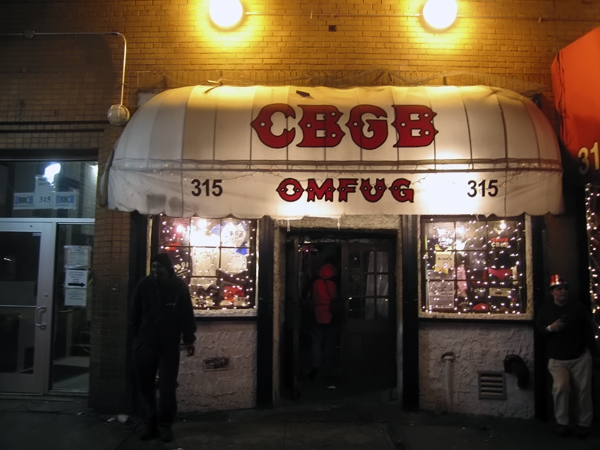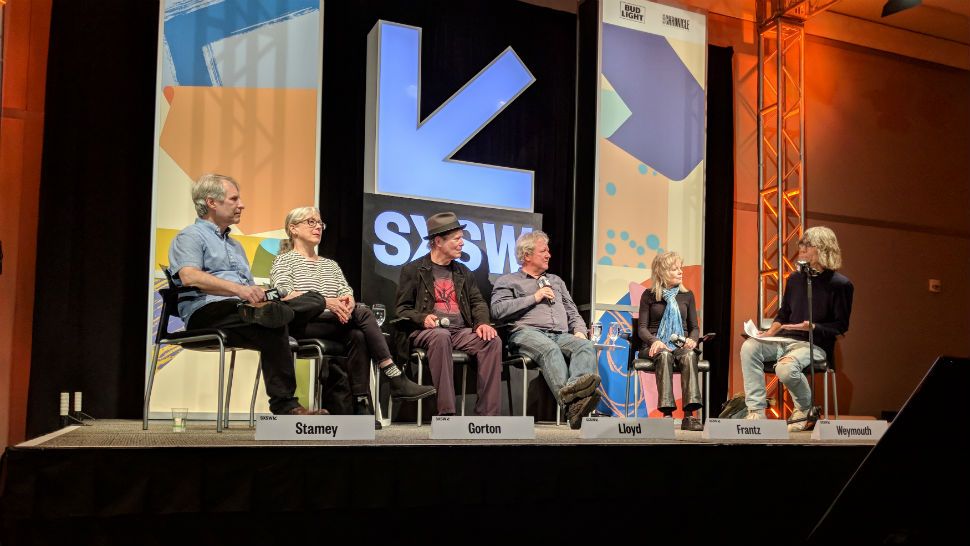AUSTIN, Texas — Over its 40-something year run open, one New York venue became the heart of U.S. punk rock — the "petri dish" known as CBGB’s.
A venue that we, at present day, romanticize over, lamenting that what once was and what will never be again. The battlegrounds where our rock fathers and mothers made their exodus to from their suburban or rural home bases to create and foster something that has left its indelible mark on culture and music forever.
Members of the Ramones, the Buzzcocks, Blondie, Patti Smith, Television, the Talking Heads, etc., left all they knew and found a new way, in hopes of disconnecting from the swell of the arena rock model, away from everything contemporary music had ever known.

CBGB's facade. Image/relux., Flickr
"We were all poor,” recalled Tom Tom Club/Talking Heads bassist Tina Weymouth of the mid-Seventies. “None of us had money, New York City had no money, but we also didn't have [Nineties mayor Rudolf] Giuliani ticketing us for jaywalking.”
“[CBGBs owner] Hilly [Kristal] enabled us,” Television guitarist Richard Lloyd interjected. “He was a frustrated performer himself. He had a single on the jukebox, like our own version of Waffle House!”
The Friday panel, moderated by veteran Rolling Stone writer David Fricke also featured Tom Tom Club/Talking Heads drummer Chris Frantz, legendary North Carolina producer Chris Stamey and New York Rocker magazine photographer Julia Gorton.
The group detailed the paths that led them to New York City’s East Village, what made it so appealing, and how community, strife and determination (full-time retail jobs coupled with practice sessions 5 hours a day, 7 days a week, Weymouth iterated) were what allowed their special bubble to thrive.
“Make good friends with Lady Poverty,” recounted Lloyd, passing on lessons learned to new bands. “Find a dive bar, convince them to let you play live music, make your own scene. You have to be that dedicated to create something. Maybe people will notice, maybe not."
All recounted the generosity of club owner Hilly, who would give them half of the door every show, which today, is unheard of.
According to Stamey, the end goal was different back then. It wasn’t about the money, the big house, but about the need to truly diverge/create in a tumultuous time. He added that, perhaps, today’s political climate is the perfect setup for a similar renaissance.
Fricke, not disagreeing with the panelists’ notion that hard times produce great art, posed the question(s) heavy on every modern-day musician’s mind — In a time where oversaturation and gentrification are ever-growing, how does one make an imprint? Find their own CBGB’s?
“I ate one meal per day to save up for my bass amp,” Weymouth emphasized of the sacrifices punk required, adding that all the Talking Heads lived in a tenement. “With no toilet, no heat, nor hot water, but we could rehearse there. There was no health insurance, so you'd better not get sick.”
While there’s no question that there will never be another CBGB’s, it’s all relative, the artists seemed to agree.
Weymouth closed by saying, “Forget all that,” that’s it’s fine to look back at the past, but ultimately, it’s your job to find your own way.
Forge your own path and understand the sacrifices necessary — It’s paved with crummy retail jobs, tenament-like living, and practice until your fingers bleed.
“Mushrooms grow in the dark," Lloyd said.
Seek out your community of like-minded individuals, come together on the poorly lit, sad-excuse-for a stage. Support each other, learn from each other. And when you’re ready to move onto the next step, which again, if you’re lucky, will be the success you seek, you’ll take that special place [your CBGB’s] with you.
And 40 years later, you might find yourself sitting across from your fellow “roommates,” speaking to struggling creatives about what YOUR role was in the next iteration of “Country Bluegrass Blues and Other Music For Uplifting Gormandizers.”



